The digital content landscape has undergone a seismic shift in 2024-2025, and the transformation is nothing short of revolutionary. AI content tools are no longer on the horizon—they’re reshaping how creators, entrepreneurs, and businesses produce content today. Whether you’re a solo blogger working from your home office in Sri Lanka, a marketing agency handling multiple client projects, or an enterprise scaling content production globally, artificial intelligence has become your most powerful ally.
The numbers tell the story. Search interest in AI video generators, AI agents, and multimodal AI assistants is experiencing explosive growth, with some tools recording search spikes ranging from 950% to an astounding 9,300% year-over-year. This isn’t hype—this is a fundamental restructuring of how content gets created, optimized, and distributed.
The global AI video generator market alone was valued at USD 665.33 million in 2024 and is projected to skyrocket to USD 2,841.76 million by 2034, growing at a compound annual growth rate (CAGR) of 19.9% to 28.6%. In North America alone, the market is expanding at a 20.3% CAGR, while Asia-Pacific already accounts for 31.4% of the global market share, signaling massive adoption across developing economies.
But here’s what matters most to you as a content creator: this isn’t just about statistics. It’s about taking back your time, multiplying your output, and creating better content that ranks higher, engages deeper, and converts faster.
AI Video Generators: The Game Changer for Content Creators
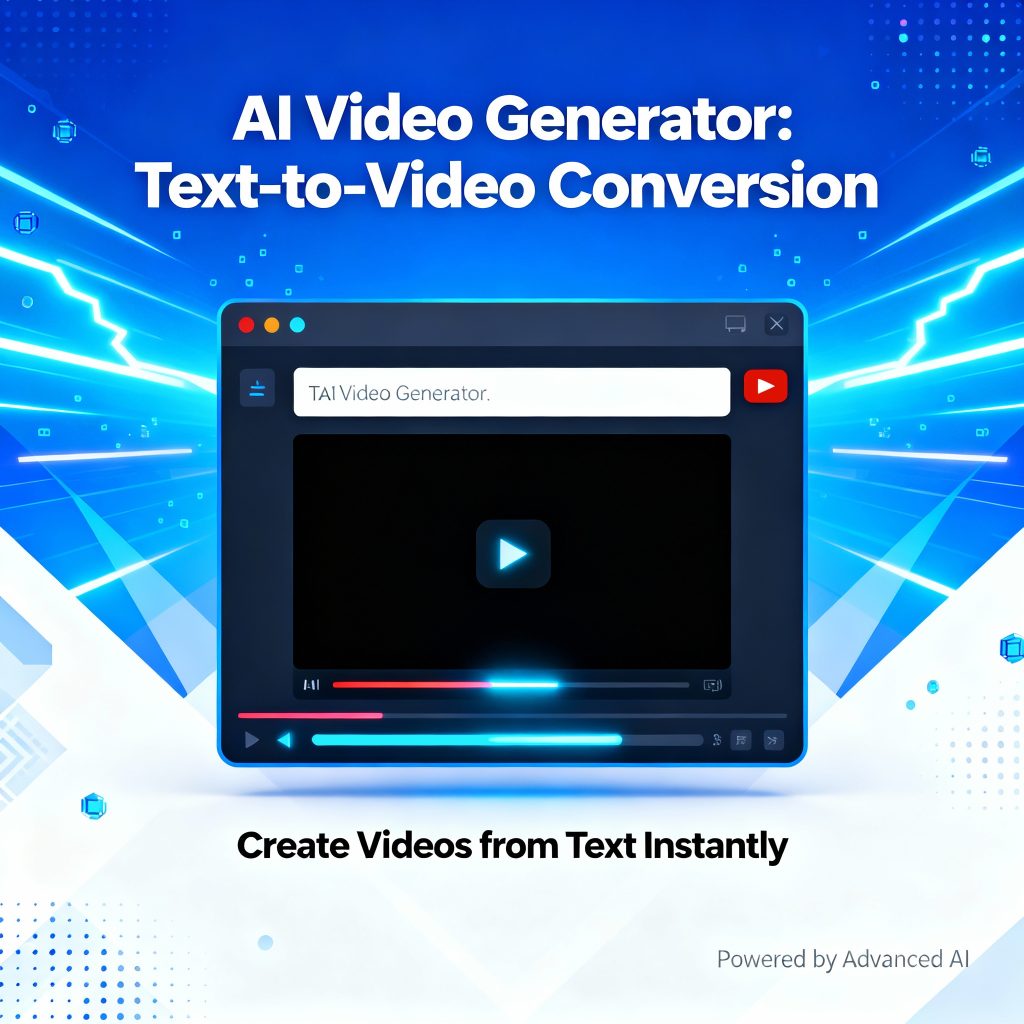
Why Video Content Dominates 2025
Video has become the undisputed king of content formats. Whether it’s YouTube Shorts, TikTok videos, Instagram Reels, or LinkedIn content, audiences are consuming video at unprecedented rates. Yet traditional video production remains a bottleneck—expensive equipment, steep learning curves, and time-consuming editing processes.
This is where AI video generators step in as a complete game-changer.
AI video generators use advanced machine learning and computer vision to transform simple text prompts, images, or scripts into fully-formed, professional-quality videos in minutes. You describe what you want, and the AI handles the heavy lifting: scene composition, transitions, text overlays, voice generation, and even background music synchronization.
How AI Video Generators Work
Text-to-Video Generation: The most transformative feature. You provide a written description or blog post excerpt, and the AI creates a corresponding video. This is perfect for bloggers who want to repurpose written content into video format without re-recording everything.
Image Sequencing: Upload a series of images, and the AI automatically creates smooth transitions, adds motion effects, and generates a coherent narrative video. Ideal for creating photo story videos or product showcases.
Avatar-Based Videos: Advanced platforms like HeyGen, DeepBrain AI, and Synthesia generate lifelike AI avatars that can deliver scripted content, perfect for educational content, product demos, or corporate announcements.
Multi-Language Output: Create a video in English, and generate versions in Spanish, French, Portuguese, or any language your audience speaks—with synchronized dubbing and lip-sync.
Top AI Video Generators for Bloggers
Runway ML stands out for creative flexibility and advanced editing capabilities. Perfect if you want pixel-perfect control over your videos.
InVideo AI excels at blog-to-video conversion, automatically transforming your written posts into engaging video content with AI-generated visuals.
Synthesia is the leader in avatar-based videos, allowing you to create professional spokesperson videos without ever pressing record.
Pika Labs specializes in short-form content, ideal for creating TikTok, Instagram Reels, and YouTube Shorts.
Lumen5 remains the gold standard for automatic blog-to-video conversion with a massive library of stock footage and music.
The Business Impact
Companies using AI video generators report producing 3-5x more video content monthly compared to traditional production methods. Cost reductions typically range from 60-80%, as you eliminate expensive camera equipment, studio rentals, and video editor salaries.
For bloggers specifically, this means:
- Convert every blog post into 3-5 social media videos automatically
- Repurpose one piece of content into YouTube, TikTok, LinkedIn, and Instagram versions in under 10 minutes
- Test different video formats at scale without hiring a video team
AI Agents: Automating Your Content Workflow
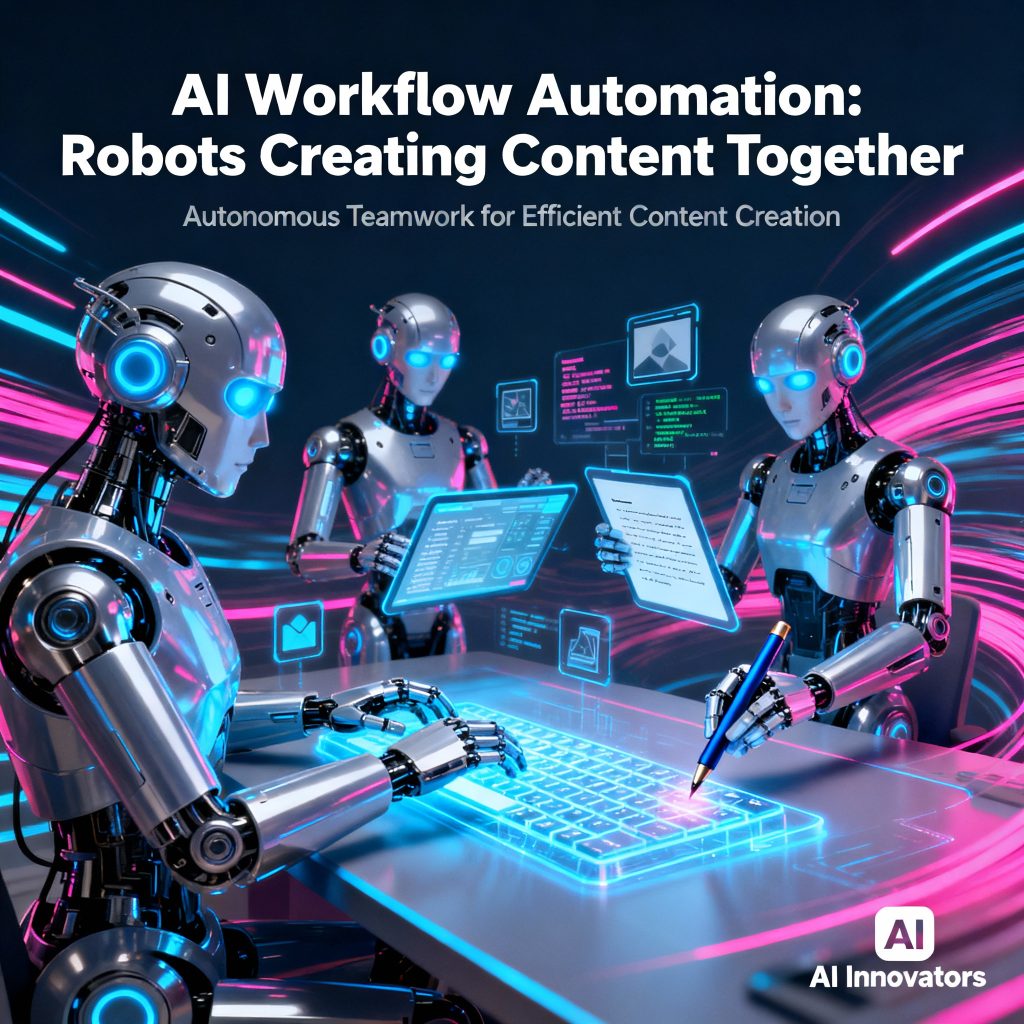
The Shift from Tools to Agents
If AI video generators are about creating one piece of content, AI agents are about orchestrating your entire content ecosystem. They’re not just tools you use—they’re intelligent systems that learn your preferences, anticipate your needs, and execute complex workflows without constant supervision.
According to recent research, 82% of businesses plan to integrate AI agents into their content workflows by 2025, with enterprise adoption expected to reach 85% by year-end. The reasons are compelling: businesses using AI agents report 40% improvements in content production efficiency and 38% better audience engagement rates.
What Makes AI Agents Different
Autonomy: Unlike traditional AI writing tools, agents operate with minimal human oversight. You set parameters and objectives, and they handle execution, optimization, and iteration.
Multi-Format Capabilities: AI agents don’t just write—they ideate, structure, optimize, distribute, and measure. They work across blog posts, social media content, email campaigns, landing pages, and video scripts simultaneously.
Learning & Adaptation: Advanced agents analyze what works for your audience and automatically adjust tone, structure, length, and format accordingly.
Integration: Agents connect with your entire tech stack—CRM systems, email platforms, social media schedulers, analytics tools—creating a seamless workflow.
Top AI Agents for Content Creation
Google Gemini leads in versatile content creation, offering strong capabilities across blogs, social media, and marketing copy. It excels at research-backed content with fact-checking built-in.
Microsoft Copilot dominates enterprise environments, integrating seamlessly with Office applications, SharePoint, and enterprise systems.
OpenAI GPT-4 remains the powerhouse for complex writing tasks, long-form content, and nuanced creativity. It’s the foundation many other tools build upon.
Perplexity AI specializes in research-backed content, perfect for creating authoritative blog posts with real-time information sourcing.
Stack AI allows you to build custom AI agents without coding, letting you create workflows specific to your unique content needs.
AI Agents in Action: Real-World Workflow
Here’s how an AI agent transforms content creation for a typical blogger:
Morning: You set a topic and upload keyword research. The agent generates 5 different outline options optimized for SEO.
Midday: You select your preferred outline. The agent writes a full 3,000-word blog post, optimizing for your target keyphrase, incorporating internal links, and formatting with subheadings.
Afternoon: The agent automatically creates 10 social media posts from the blog content, optimizing each one for different platforms (Twitter length limits, LinkedIn tone, Instagram hashtag strategy).
Evening: The agent schedules everything, monitors performance, and sends you a summary report.
Next Day: Based on engagement metrics, the agent suggests title variations or content angle adjustments for maximum reach.
This workflow that used to take 2-3 days now takes a few hours, with the human creative focused on strategy and refinement rather than execution.
Multimodal AI Assistants: The Integration of Text, Image, and Audio
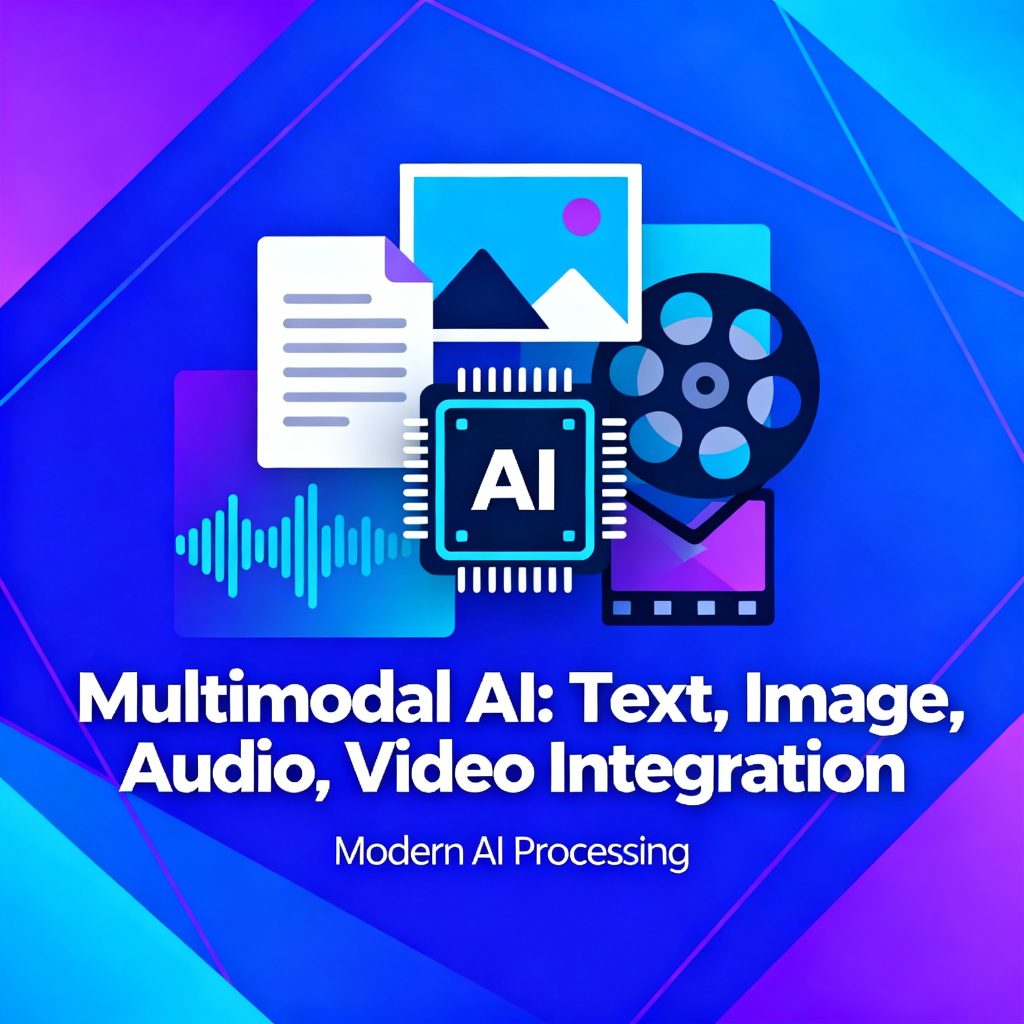
What Is Multimodal AI?
Multimodal AI represents the future of content creation—systems that seamlessly integrate text, images, video, and audio in a single workflow. Instead of jumping between different tools for different formats, multimodal assistants understand and generate across all modalities simultaneously.
OpenAI’s GPT-4 Vision, Google’s Gemini, and emerging platforms like Kimi-VL represent this shift. They don’t just read text—they understand images, interpret diagrams, listen to audio context, and generate content that considers all information types.
Practical Applications for Bloggers
Content Enrichment: Upload your blog post and several reference images. The multimodal AI automatically:
- Generates SEO-optimized captions for each image
- Suggests where to place images for maximum engagement
- Creates alt-text for accessibility and SEO
- Generates a podcast version with proper pacing and emphasis
Video Script Generation: Feed the AI a rough video concept, reference images, and your brand voice guidelines. It generates:
- A professional video script with timing
- Suggested visual cuts and transitions
- AI voiceover with appropriate tone
- Background music recommendations with timestamps
Comprehensive Content Packages: One input generates:
- 3,000-word blog post
- 5 social media variations
- Email newsletter version
- YouTube video script with timing
- Podcast transcript
- Infographic outline with data points
- LinkedIn thought leadership article
Top Multimodal AI Platforms
OpenAI GPT-4 Vision leads in accuracy and nuance, understanding complex visual contexts and generating sophisticated written content based on image analysis.
Google Gemini excels at integration with Google’s ecosystem (Search, Docs, Drive), making it seamless for collaborative content teams.
Anthropic’s Claude 3 stands out for safety and accuracy, particularly valuable when you need factually reliable content for authoritative pieces.
Perplexity AI combines multimodal understanding with real-time web search, perfect for current events content and data-driven articles.
Best AI Tools for Bloggers: Your Complete Toolkit
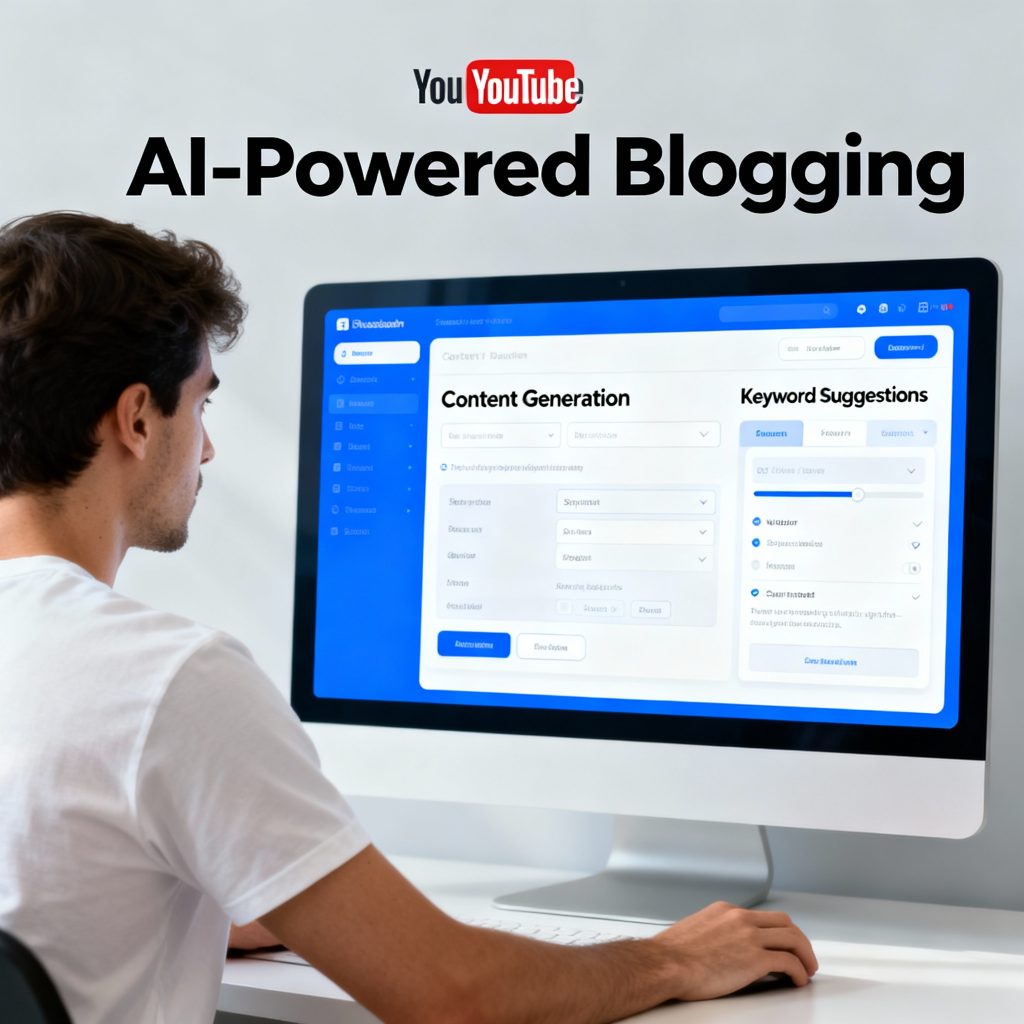
SEO-Focused AI Writing Tools
For bloggers prioritizing search visibility, certain AI tools have emerged as category leaders.
Jasper AI remains the gold standard for SEO-optimized blog content. It excels at:
- Keyword integration that feels natural, not forced
- Topic clustering for topical authority
- YOAST SEO-style real-time optimization prompts
- Customizable brand voice and tone templates
Copy.ai offers incredible speed and cost-effectiveness, generating blog post variations and social copy in seconds. Perfect for scaling content production quickly.
Writesonic specializes in SEO-optimized long-form content with built-in keyword research and competitor analysis. It’s particularly strong at understanding user intent and matching content accordingly.
Content Research & Ideation
Perplexity AI is unmatched for research-backed content. It combines AI generation with real-time web search, allowing you to cite recent sources and current data automatically.
Frase combines content research, AI writing, and SEO optimization. Its standout feature is the content brief generation that shows you exactly what competitors are ranking for and what gaps you can fill.
Social Media & Multi-Format Content
Buffer’s AI Assistant understands platform nuances perfectly—character limits for Twitter, professional tone for LinkedIn, hashtag strategy for Instagram. It’s built specifically for social content creators.
Later combines AI-powered content creation with visual planning, showing you what your content calendar looks like before publishing.
Email & Newsletter
Copy.ai and Jasper both excel at email subject lines and body copy that converts. Key advantage: they maintain consistent brand voice across all channels.
Implementation Strategy: How to Integrate AI Tools Into Your Workflow
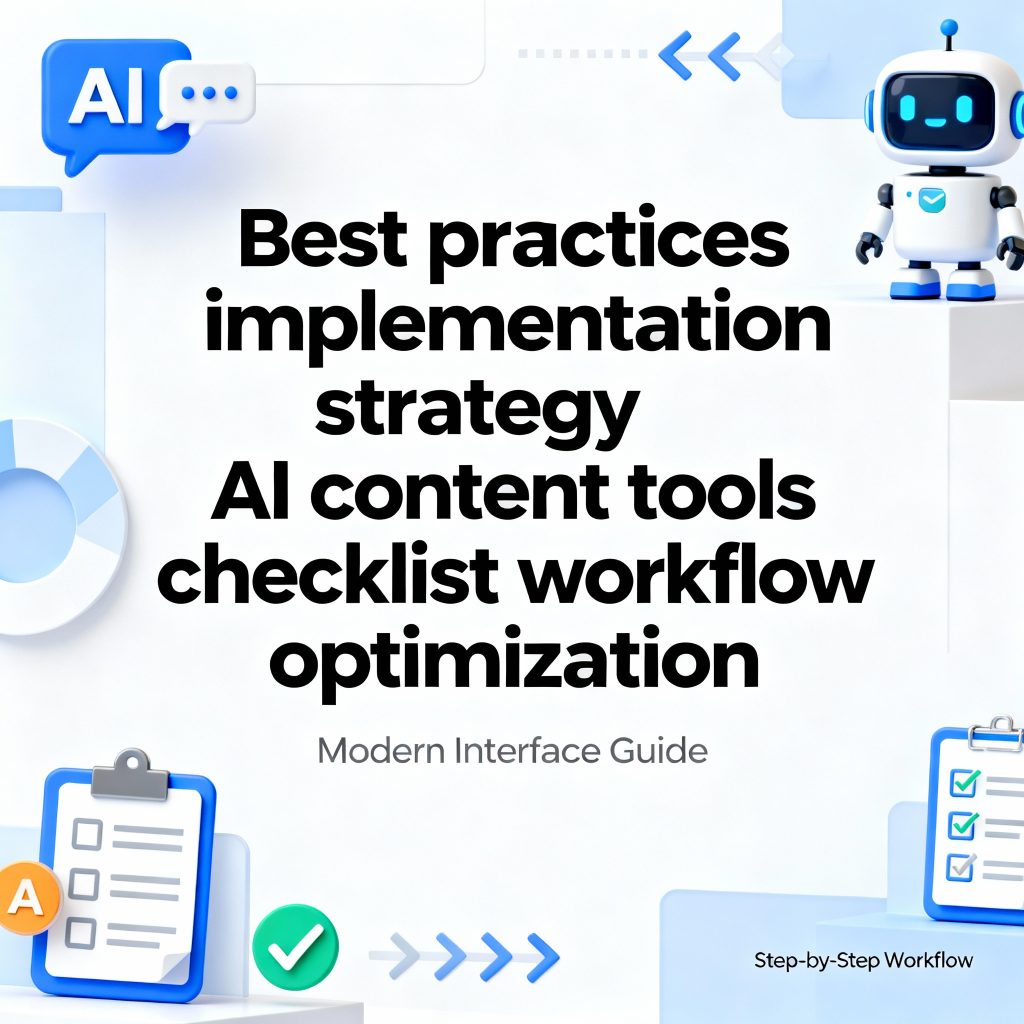
Step 1: Define Your Content Goals
Before adopting AI tools, be crystal clear about what you want to achieve:
- How many pieces of content do you need monthly?
- Which formats matter most (blog, video, social, email)?
- What’s your target audience, and what tone resonates with them?
- What keywords or topics must you rank for?
Step 2: Choose Your Core Tools
Don’t try to use everything at once. Start with a maximum of 3 tools:
- One for writing (Jasper, Copy.ai, or Writesonic)
- One for video (InVideo AI or Synthesia if you need avatars)
- One for social media (Buffer AI or dedicated social tool)
This focused approach prevents tool overwhelm and helps you master features quickly.
Step 3: Build Your Content Workflows
Create standard operating procedures for different content types. For example:
Blog Post Workflow:
- Run keyword research → Provide top keywords to AI
- AI generates 3 outline options → You select and modify
- AI generates full draft → You add personal examples and voice
- Run through YOAST or Rank Math for SEO checks
- Generate social variations
- Convert to video using AI video tool
- Schedule and monitor
Video Content Workflow:
- Write blog post or script outline
- Upload to AI video generator
- Review and edit generated video
- Generate 3-5 social media clips from full video
- Schedule across platforms
Step 4: Quality Control & Human Touch
Here’s what AI cannot do: inject your unique perspective, voice, and personality. Your role evolves from creator to editor and strategist.
For every AI-generated piece:
- Edit ruthlessly. Your voice matters. AI provides the skeleton; you add the soul.
- Add specific examples. AI uses generic examples; replace with your unique situations.
- Fact-check carefully. AI sometimes generates plausible-sounding but incorrect information. Verify data, quotes, and statistics.
- Update with current info. AI training data has a cutoff date. Add recent developments and current trends.
Step 5: Measure Everything
Set up tracking for:
- Content production time (should decrease 50-70%)
- Engagement rates (typically improve 15-40%)
- Search rankings for target keywords
- Video view-through rates
- Email open and click rates
- Cost per piece of content
Most creators see measurable improvements within 30 days of implementation.
Practical Content Ideas Using AI Tools
Idea 1: Blog Post Series Factory
Pick a broad topic (e.g., “Digital Marketing for Beginners”). Use an AI agent to:
- Generate 20 specific article angles from that topic
- Create SEO-optimized 2,500+ word posts for each
- Generate 5 social posts per article
- Create video scripts for top performers
- Compile into a downloadable e-guide
Output: 20 blog posts, 100 social posts, 5 video scripts in a single day
Traditional time: 4-6 weeks
AI time: 1-2 days
Idea 2: Multi-Language Content Expansion
Write one blog post in English. Use AI to:
- Translate to Spanish, Portuguese, French, German
- Adapt for local cultural context (not just direct translation)
- Generate video versions in each language with AI dubbing
- Create region-specific social media variations
Output: Same content, 4-5x reach
Perfect for: Tapping into Sri Lankan diaspora content market or regional audiences
Idea 3: Viral Content Repurposing
Take one successful blog post and use multimodal AI to generate:
- 15-second TikTok/Reels clips with AI voiceover
- Twitter/X threads
- LinkedIn carousel posts
- Email newsletter sequence
- Podcast episode with transcript
- YouTube video with auto-generated subtitles
- Medium article version
- Facebook carousel ads
Output: 8 completely different content formats from one idea
Time investment: 2-3 hours vs. 5-7 days traditionally
Idea 4: The Content Calendar System
Use AI agents to:
- Analyze your audience’s engagement patterns
- Identify trending topics in your niche
- Generate content calendar for 90 days
- Create all content automatically
- Schedule publishing
- Monitor performance and adjust
Output: Completely planned and pre-created content for 90 days
Time per month: 2-3 hours for strategy review and editing
Traditional approach: 20-30 hours monthly for planning and creation
Case Studies: Real Results with AI Content Tools
Case Study 1: The Solo Blogger Scale
Background: A Sri Lankan freelance writer producing financial content, previously writing 8-10 blog posts monthly while maintaining other freelance work.
AI Implementation: Adopted Jasper AI for blog writing + InVideo AI for videos
Results After 60 Days:
- Content production increased to 40 posts monthly (300% increase)
- Average time per post reduced from 4 hours to 45 minutes
- Search traffic improved by 127% (combination of quantity and improved SEO optimization)
- Monthly income increased 65% (more content = more opportunities for monetization, sponsorships, affiliate links)
- Quality actually improved due to AI’s consistency and YOAST integration
Key Learning: Quantity isn’t just volume—AI’s consistent optimization meant better rankings, which drove more organic traffic than sporadic high-effort posts.
Case Study 2: The Video Content Creator
Background: TikTok and YouTube creator with great ideas but no video editing skills, producing 3-4 videos weekly.
AI Implementation: Switched to Runway ML for video creation + Synthesia for avatar videos
Results After 45 Days:
- Video output increased to 15-18 videos weekly (5x increase)
- Engagement rate increased from 2.1% to 3.8% (fresh content more frequently)
- Production cost decreased from $50-100/video to $0-5/video
- Followers increased 340% due to consistent posting frequency
- Successfully monetized through sponsorships that were impossible with lower volume
Key Learning: Consistency beats perfection. Higher volume with AI-generated content outperformed lower volume of hand-crafted content.
Case Study 3: The Affiliate Marketing Operation
Background: Content marketer creating product reviews and comparison guides, 5 articles weekly reaching about 8,000 monthly visitors.
AI Implementation: Full stack—Copy.ai for writing, MultiModal AI for images/video, Buffer AI for social
Results After 90 Days:
- Content volume increased to 15 articles weekly
- Monthly visitors increased to 47,000 (488% growth)
- Affiliate commission income increased from $1,200 to $6,800 monthly (567% increase)
- Time spent on content creation decreased by 60% despite 3x volume
- Content refresh cycle sped up (now updating content monthly instead of quarterly)
Key Learning: AI’s consistency and volume enabled faster content cycles, which improves search rankings as Google favors recently updated content.
The Economics: ROI of AI Content Tools

Cost Breakdown
Traditional Content Production (per 1,000 articles yearly):
- Freelance writers at $50/article: $50,000
- Editor/QA: $15,000
- Tools (project management, SEO): $3,000
- Scheduling/distribution: $5,000
- Total: $73,000
AI-Powered Production (per 1,000 articles yearly):
- AI writing tools: $300-500/month = $3,600-6,000 yearly
- Video tools: $300-600/month = $3,600-7,200 yearly
- One part-time editor: $12,000
- Additional tools: $3,000
- Total: $22,200-28,200
Savings: $44,800-50,800 yearly (61-69% reduction)
Revenue Impact
For bloggers using these tools effectively:
Conservative estimate (organic search + ads):
- 1,000 posts yearly generating average $50 in organic value
- 500 videos generating average $100 in viral/monetization value
- Revenue increase: $50,000-75,000 yearly
Realistic estimate (bloggers actively promoting):
- Content powers affiliate marketing: +$100,000-300,000
- Sponsorship deals from increased visibility: +$50,000-150,000
- Digital products/courses powered by content: +$75,000-250,000
- Total potential: $225,000-700,000+
Common Challenges & Solutions
Challenge 1: Content Sounds Generic/AI-Generated
Solution: This is actually about quality control, not tool limitations. The fix:
- Always add personal examples and stories
- Use AI for first drafts and outlines, not final content
- Inject your unique voice in the editing stage
- Include specific data or research only you have access to
- Tell stories from your perspective
Challenge 2: SEO Rankings Don’t Improve
Solution: AI excels at optimization but needs your strategic direction:
- Provide explicit keyword targets (AI doesn’t always know what to prioritize)
- Ensure content meets search intent (read top-ranking competitors first)
- Quality links matter—AI can’t create backlinks (that’s still on you)
- E-E-A-T (Experience, Expertise, Authority, Trust) requires your credibility
- Fresh, updated content performs best
Challenge 3: Video Looks Robotic/Unnatural
Solution: Modern AI video is actually quite good, but setup matters:
- For avatar videos: upgrade to premium avatars for natural appearance
- For generated video: use diverse shot types rather than static backgrounds
- For voiceover: choose premium AI voices over basic ones
- Add captions, music, and graphics for polish
- Break up long videos into shorter segments
Challenge 4: Time Investment Is Still High
Solution: You’re probably not delegating enough to AI. If editing takes 2+ hours per post:
- AI can handle more. Push it to create first drafts with minimal prompts.
- Use workflows/templates to standardize your process
- Batch your editing—edit 10 pieces in one session rather than individually
- Use tools’ built-in optimization (YOAST integration, etc.) instead of manual SEO checks
Challenge 5: Inconsistent Quality
Solution: Consistency requires:
- Brand voice guidelines (document exactly how you sound)
- Template outputs (same structure for all blog posts)
- Clear prompts (the more specific your instructions, the better the output)
- Consistent quality checks (same person edits all content)
The Future: What’s Next for AI Content Tools
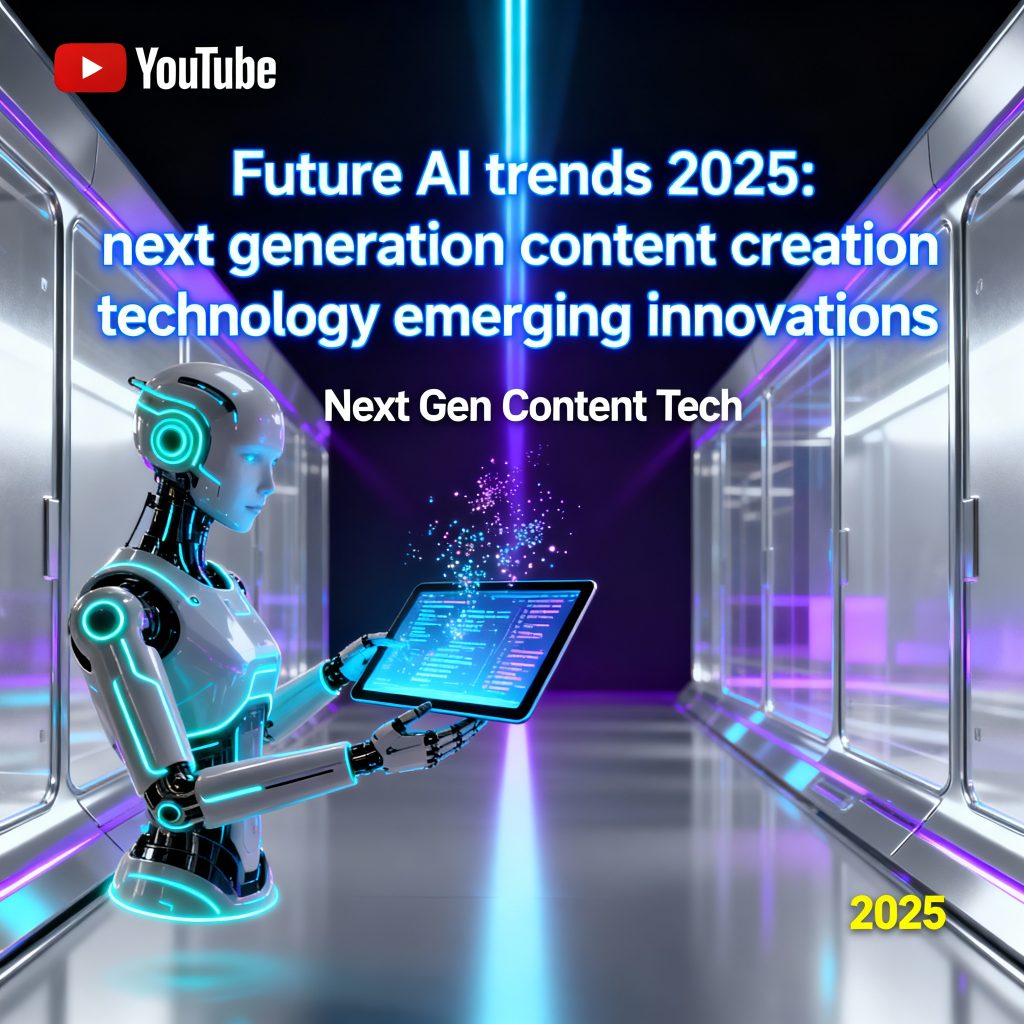
Emerging Trends for 2025-2026
Computer Vision Integration: AI agents will “see” your existing content library and automatically suggest the best pieces to remix, update, or repurpose.
Predictive Content Performance: Before publishing, AI will predict engagement rates, suggesting modifications to maximize performance.
Autonomous Agent Teams: Multiple AI agents working together—one researches, one writes, one optimizes, one designs graphics, one creates videos—all coordinating without human oversight.
Real-Time Personalization: Every reader gets a slightly customized version of your content based on their interests, location, reading history.
Regulatory Evolution: Expect regulations requiring disclosure of AI-generated content. Tools will handle this automatically, but transparency will become standard.
Voice-First Content Creation: Speak your ideas aloud, and AI converts them into written blog posts, video scripts, and social content simultaneously.
Quick Reference: Tools Comparison Matrix
| Feature | Jasper AI | Copy.ai | Writesonic | Runway ML | InVideo AI |
|---|---|---|---|---|---|
| Blog Writing | ⭐⭐⭐⭐⭐ | ⭐⭐⭐⭐ | ⭐⭐⭐⭐ | N/A | N/A |
| SEO Optimization | ⭐⭐⭐⭐⭐ | ⭐⭐⭐ | ⭐⭐⭐⭐ | N/A | ⭐⭐⭐ |
| Video Creation | N/A | N/A | N/A | ⭐⭐⭐⭐⭐ | ⭐⭐⭐⭐⭐ |
| Social Media | ⭐⭐⭐⭐ | ⭐⭐⭐⭐⭐ | ⭐⭐⭐ | ⭐⭐⭐⭐ | ⭐⭐⭐⭐ |
| Ease of Use | ⭐⭐⭐⭐ | ⭐⭐⭐⭐⭐ | ⭐⭐⭐ | ⭐⭐⭐ | ⭐⭐⭐⭐ |
| Price | $$$$ | $$ | $$$ | $$$$ | $$$ |
| Best For | Serious bloggers | Quick scale | Long-form | Video creators | Blog-to-video |
Conclusion: Your AI Content Future Starts Now
The AI content tools boom isn’t coming—it’s here, and it’s fundamentally changing what’s possible for individual creators, small businesses, and enterprises. The question isn’t whether to adopt these tools; it’s how quickly you can integrate them effectively.
For you as a software engineer and content creator from Sri Lanka, the opportunity is massive. You can now:
- Create 5-10x more content without proportional time investment
- Launch affiliate marketing or SaaS businesses powered by AI-generated content
- Build authority faster by publishing consistently across multiple platforms
- Generate significant income from content that previously required a team
Start small: Pick one tool, master it for 30 days, then expand. The creators who’ll dominate 2025-2026 aren’t the ones trying to use every tool—they’re the ones who mastered the fundamentals and built repeatable systems.
Your competitive advantage isn’t the tool—it’s how you use it. AI provides the mechanics; your creativity, strategy, and voice provide the magic.
The future of content creation is here. Make it yours.


